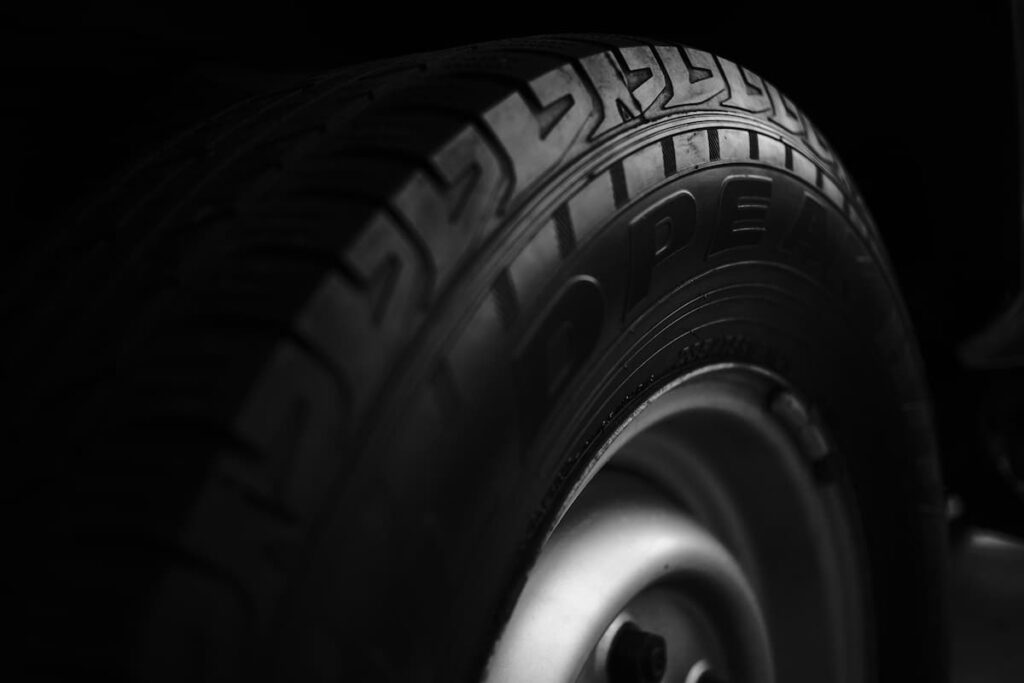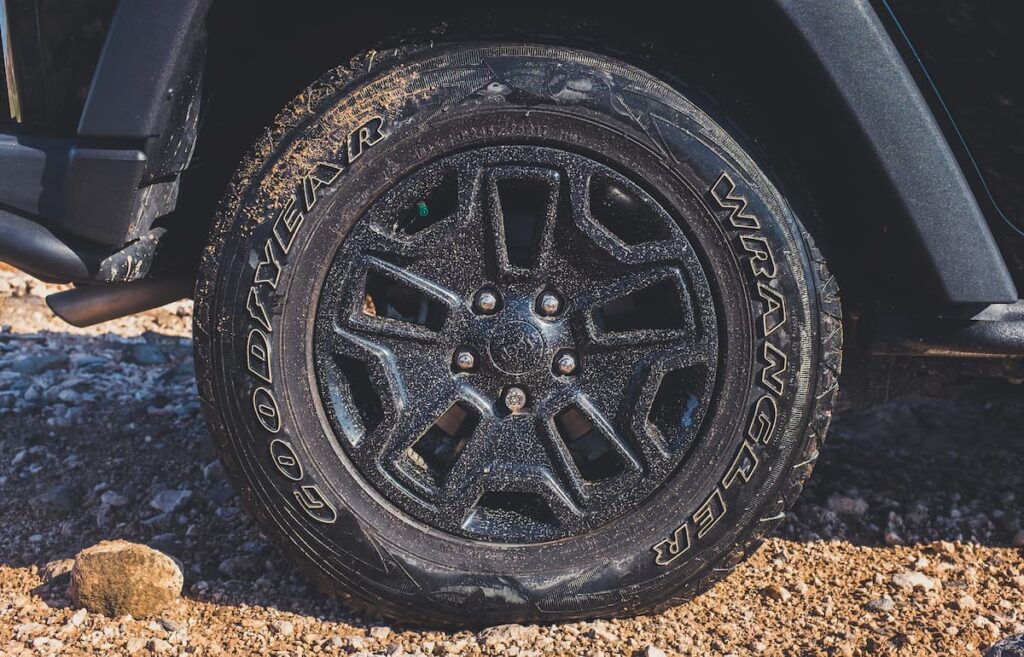Tires suffer from wear and pressure from the vehicle’s weight. The more you drive, the more wear and tear you’ll experience — which are the main factors that cause air loss in tires.
Learn how to protect your tires and what’s your vehicle’s ideal pressure.

Tire pressure: why do tires lose air, and what are the consequences?
Not paying attention to (ideal) tire pressure can cost you a lot. When tires are flatter, they wear out quickly, increasing fuel consumption — not to mention your safety, which is at risk.
So it’s best to opt for the manufacturer’s recommended pressure so these problems don’t become significant concerns.
But why do tires lose air?
It’s a great question, often debated by drivers, but with no clear answer. What’s known is that tires lose about 0.07 bars of pressure in a month.
But what’s this loss due to? Well… regular vehicle use. This is the most common cause. But beware, because there can also be a crack in the rim, for example — which sometimes requires changing the wheel.
To prevent this from happening, learn how to measure the air pressure in your tires.
How to measure tire pressure in 4 steps
First, the car must be stopped with the tires still cold. Alternatively, you can do this with less than 5 kilometers driven — as hot tires tend to tamper with the pressure values, so respect this measurement condition.
Then follow these steps:
- Insert the pressure gauge into the top of the tire valve;
- Wait for the gauge to show the current tire pressure;
- Compare the current value with the one recommended by your car’s manufacturer (in the manual provided or on the plate inside the driver’s door);
- If the current pressure’s above the recommended, deflate the tire. If it’s below, add air until the values match.
It’s important to follow these steps carefully, as there’s no standard pressure for all cars.

How to know your car’s ideal tire pressure
The correct pressure varies between car brands and models. Some vehicles’ ideal pressure is identical in all 4 tires, as there are those where the values differ — from the front tires to the rear ones. In general, the recommended pressures sit between 2.2 and 2.5 bars. And, just as you should pay attention to this, you should also be concerned about tire balance.
But remember that to find out your car’s ideal tire pressure, you should look for the value in the user manual — or on the plate inside the driver’s door.
You can also find a pressure level on the side of the tire. But this is different from the pressure the manufacturer recommends but the pressure the tire can withstand. So guide yourself by the manufacturer’s directions.
Deflating or inflating tires: what to do (and how)
If you notice that your tires are overinflated, you need to deflate them:
- Locate the valve and remove the cap;
- Press the metal pin inside the valve with a screwdriver;
- The more pressure you put on the pin, the more air comes out. Measure the pressure from time to time to stay within the recommended level.
But if, on the other hand, your tires are underinflated, you need to fill them up:
- At a gas station, locate the pressure gauge (you’ll usually find it near the exit);
- Set the pressure you want on the gauge’s screen;
- Remove the valve cap;
- The moment you push the pump against the valve, the tire starts to inflate;
- You’ll hear a sound when the tire has the pressure you set initially.
But you can also use a conventional pump. To do this, use the pressure gauge a few times to confirm that you’ve reached the desired pressure.
And remember to do a monthly tire check. Those 5 minutes will prevent unnecessary expenses and ensure your safety.

